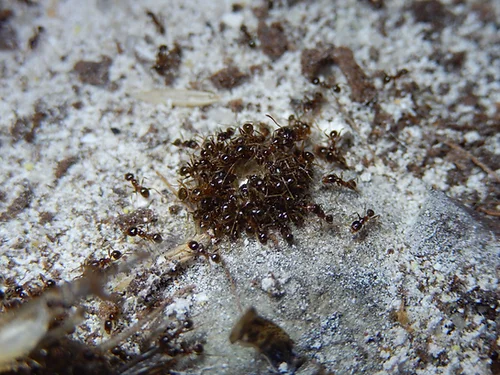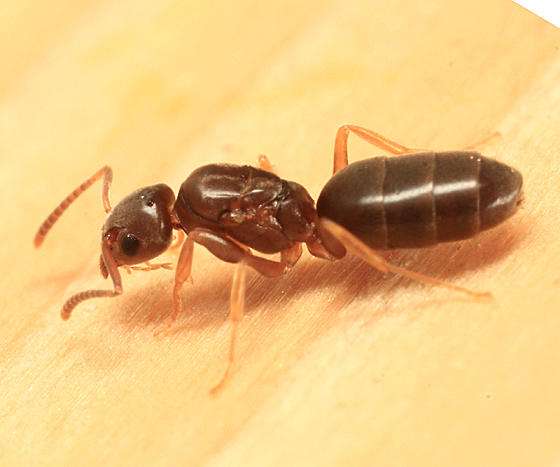
Mostly a species of the western Mediterranean, found from Italy to Spain and North Africa. From the Balkans eastward, some closely related taxa can be found. They favor warm, open environments like pastures, roadsides, mediterranean shrubs, woodlands, and rural areas in anthropogenic settings. Members of this complex are pioneering species because they are among the first to live in disturbed habitats caused by human activity, such as places that have been burned or areas where roads have been built.
Identification
Full-face view of the head reveals that it is sub rectangular with a moderately deep impression on the posterior margin. The clypeus is smooth and shiny, with a weak median longitudinal carina. The frontal carinae are short and feebly divergent. The antennae are elongated. The eyes are small and weakly rounded. The hypostoma has a pair of large lateral teeth. The mesosoma has a slightly domed pro In profile, the post petiole is small and spherical, the gaster is clearly smaller than the head, and the pilosity is long, fine, and plentiful. Except for the thin longitudinal striations on the anterior region of the head, the sculpture on the body is shiny. Mandibles are dark brown, with an overall pale yellowish brown color.

Care
Pheidole pallidula in general requires little maintenance.
Food
Pheidole pallidula are omnivorous creatures. Fruit sugars, sugar water, and ant jellies are all favorites of theirs. They thrive on fruit flies, mealworms, crickets, and other tiny insects as a source of protein. If you give these ants a lot of food, they will quickly multiply into huge numbers.
Humidity
Pheidole pallidula doesn’t require a lot of humidity. It is more than enough to partially hydrate the nest.
Temperature
Higher temperatures are advantageous for Pheidole pallidula. To give the ants a beautiful gradient, heat one side of the nest.
Temperature
Avoid heating the water source since the condensation could cause the ants to drown.
Hibernation
The diapause in Pheidole pallidula lasts from November to March.
Sting/Bite
These ants are unable to bite or sting.
Description
Fast-growing Pheidole pallidula species are known for their large, powerful majors. With their big, pointed mandibles, the major’s job is to chop through tough food so that workers can easily access the insides of insects. They will consume large amounts of protein because they are a particularly hungry creature. Make sure you have effective escape prevention measures in place because they are quick runners and will easily escape! Foraging, they emerge from the nest as teams. When required, the majors will be sent into action! They enjoy humidity and frequently rest on wet cotton or other materials.
Table





